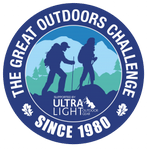Ten Tips for First Time Challengers
With most walking or running events your route is already set and all you need to do is train well enough to be able to follow it. The TGO Challenge is different. You have a vast majority of Highland Scotland to play with and it can feel a bit daunting. So much in life these days is instant but preparing a Challenge route isn’t. Routes tend to develop and mature with time which is why we give you 4 months to put it together – so don’t leave it to the last minute!
The Event Details are essential reading before you start planning your first route but we have put together some tips to get you started.
- Don’t be over ambitious! It is not a competition and the aim is to enjoy your crossing. There are no special plaudits for a hard or high route. If you don’t already have experience of backpacking over Scotland’s hills we advise taking your route through the glens and keep your distances to 15-25km a day. You may have lots of places you want to visit but accept you can’t pack them all into one route. You can fit the others in your 2nd, 3rd or even 10th crossing!
- Consider a rest day or a couple of shorter days giving you time to recuperate or catch up if you fall behind schedule. You are, after all, on holiday!
- Large scale maps such as a road map can be useful to start planning your route. Mark places you want to visit and it may give you an idea of how to join them up, then use the 1:50 000 to plan your route in detail. Scottish Hill Tracks (Scotways) is worth a look as it shows you Scotland’s Rights of Way. They may not all be evident on the ground but at least you know someone has gone that way before – quite probably a Challenger! Geograph and Where’s the Path are useful websites to get an idea of the terrain.
- Start and finish points. All the Start Points have their own merits – you can find more information here. For those unfamiliar with Scotland, Shiel Bridge, Oban and Portavadie give good access to lower level routes with tracks or paths. Mallaig is a spectacular start as you can take a ferry to Knoydart where there are mainly clear but rugged paths through spectacular scenery. Morar, Strathcarron and Torridon lead to more testing ground and are probably best left for future crossings. You can finish anywhere you like between Fraserburgh and Arbroath. Roger Smith’s Guide to Finish Points can be found here.
- Sociable or solitary? It’s your choice – most Challengers do a bit of both. Many places have taken the Event to their hearts and you will find Challengers gathering in many villages along the way. Cannich and Fort Augustus on the west, Dalwhinnie and Newtonmore, in the middle and Braemar, Ballater and Edzell on the east, all come to mind. A few places such as Cougie, Ault-na-Goire, Callater Lodge and St Drostan’s at Tarfside open up especially for the Challenge – see the Event Details accommodation section.
- Foul Weather Alternatives. Even lower level routes require occasional FWAs. For example the Lairig Ghru and Jock’s Road are classic walks but go over relatively high ground. By all means include one or both but your FWAs which will need to go over two days for both of these examples. If you plan to take in any hills FWAs are required and you need to look for ways to link them to and from your main route.
- Route sheets. This can feel a bit like you are back at school having your homework marked! It does need to be on the form provided (Click here to download). We can’t accept GPX files by themselves as an alternative but you can give you vetter access to them by adding a link onto your route sheet. The route description doesn’t need to be an essay – no bonuses here for creative writing! – just a brief description of where you plan to go using names on the 1:50,000 maps directions e.g. N, SE, SW and occasional 6 grid references. There is guidance in the Event Details as well as some examples. If you get asked to alter your route sheet don’t worry, even experienced Challengers get asked for revisions. It won’t count against you! The vetters are there to help, advise and give you the best chance of an enjoyable crossing.
- Grid references. For overseas participants who are not familiar with Ordnance Survey maps click here. We ask grid references include the two prefix letters and 6 figures.
- Resupplies. Although you should be self-sufficient you don’t need to carry all your food for 2 weeks. You can buy supplies in towns and villages which helps support the local economy. It is worth checking opening times and stock of specialist items such as gas canisters. Alternatively you can post resupplies to accommodation you have pre-booked but check it is OK with the proprietor first.
- If you are stuck don’t give up! Plotting a route for the first time isn’t easy but Sue, Ali & Mick are just an email or a phone call away and always happy to help – tgochallenge@gmail.com.

